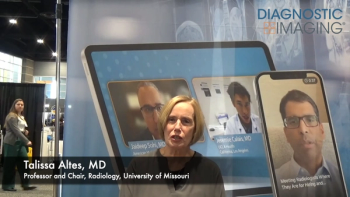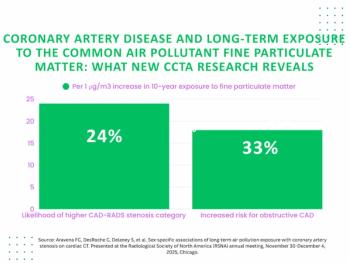
PACS does not increase number of images per study
New digital imaging modalities such as digital radiography or multirow detector CT dramatically increase the amount of data per image and the number of images per study, making it difficult for PACS to keep pace with mounting demands for storage and
New digital imaging modalities such as digital radiography or multirow detector CT dramatically increase the amount of data per image and the number of images per study, making it difficult for PACS to keep pace with mounting demands for storage and retrieval.
Although radiologists may suspect that PACS itself may be responsible for some of the traffic, a study suggests otherwise.
"We've heard anecdotal stories from radiologists in our ultrasound section. They believe the number of images per examination increased with PACS, since the labor penalty of handling film was removed," said Dr. Steven C. Horii, associate director of the Medical Informatics Group at the University of Pennsylvania Medical Center (UPMC), whose ultrasound section has been filmless for five years.
UPMC compared a baseline from an ultrasound microcosting report that revealed detailed film usage patterns for each type of exam with the same usage patterns in a PACS environment.
There were no significant differences between the baseline period and a retrospectively searched PACS period (matched for case mix) that were not readily explained by a change in protocol, Horii said. Modifying some of their protocols to stay in line with the ACR and ICAVIL standards, for example involved taking additional images for particular studies.
"To some extent, this was a surprise since it was widely believed, even by the technologists, that they were taking more images per study," he said. "It is likely that they are responding to the increased number of images on some of our commonly performed examinations."
For obstetrical ultrasound, for example, they added views of the cardiac outflow tracts. For peripheral venous studies, images of the calf veins in the lower extremities were added. Thus UPMC has increased the number of images per examination, just not because of PACS alone.
Despite more complex imaging protocols and increased use of color flow imaging (and now 3-D imaging) technologist productivity has also increased, Horii said.
"We believe this is a result of using PACS, since our technologists used to do much of the film handling themselves," he said.
Newsletter
Stay at the forefront of radiology with the Diagnostic Imaging newsletter, delivering the latest news, clinical insights, and imaging advancements for today’s radiologists.




























